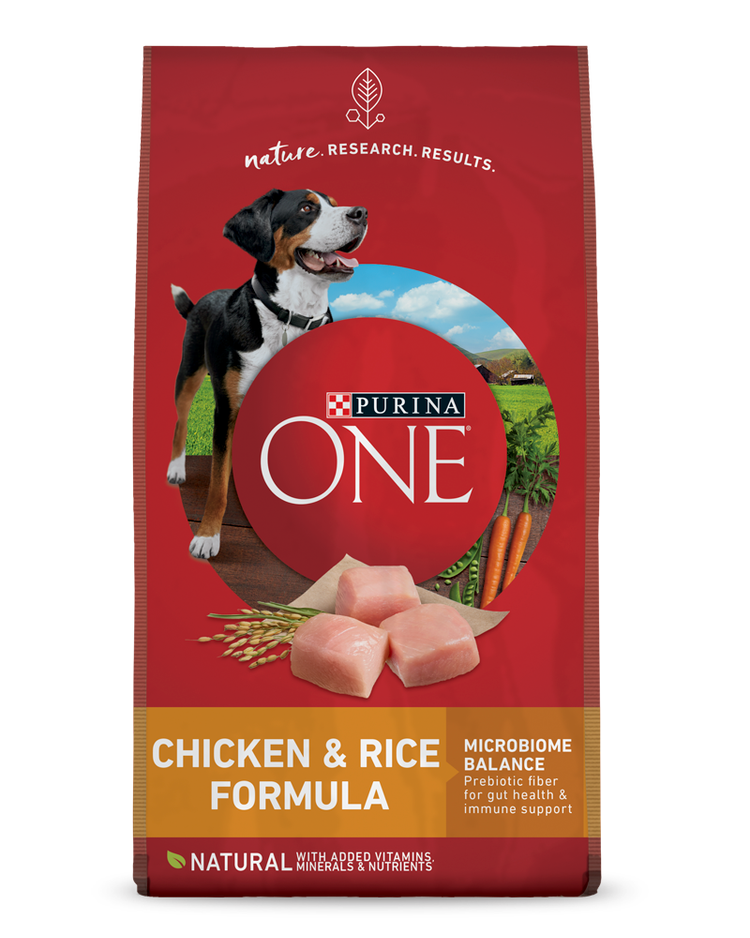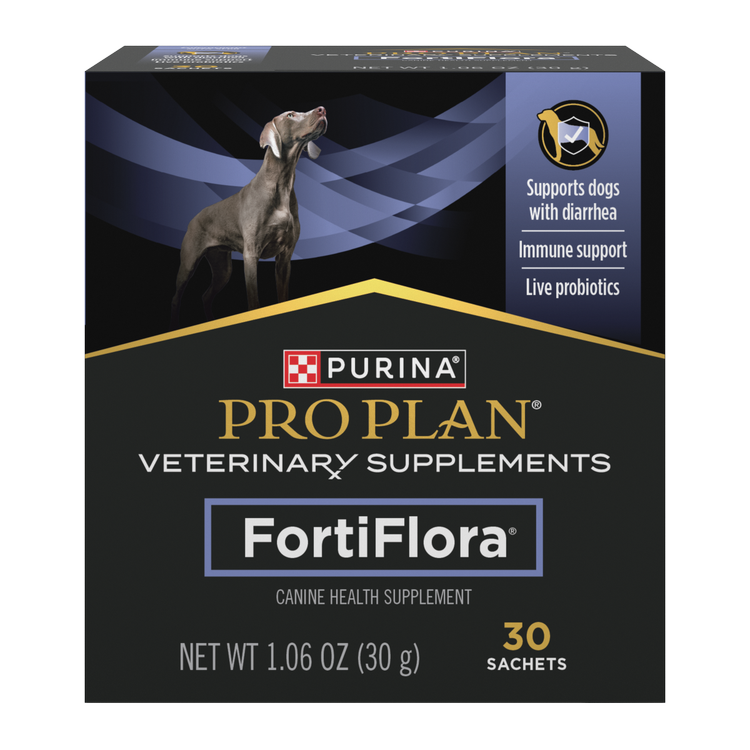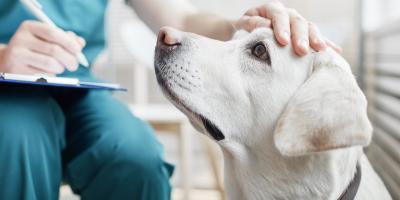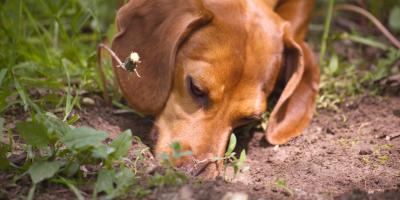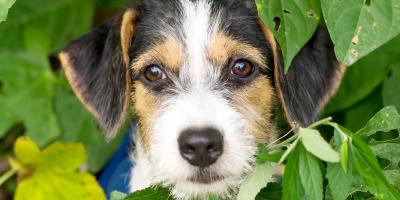What is Pica in Dogs and How to Treat It

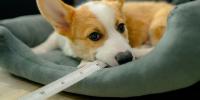
Pica in dogs can become quite a serious problem if not taken care of, so it’s best to know all the signs to help you identify the issue quickly and get your pet the help they need. Keep reading to find out some of the most surprising facts about this condition.
What is Pica in Dogs?
Pica in dogs is a condition where a dog attempts to chew and eat non-food objects, such as clothing, rubbish, or dirt. Pica can often occur because of behavioral issues such as poor breeding practices and husbandry, lack of socialization, lack of environmental enrichment, and anxiety but can less commonly be due to medical issues including a poor diet or nutritional insufficiency, illness, and parasites.
It can be hard to know what causes pica in each individual dog. It’s important to speak to your vet, as it’s important to rule out clinical issues before suspecting a behavioral cause. Your vet can diagnose and hopefully rule out illness and parasites, as well as look at your dog’s nutritional requirements and advise on how they could be changed if necessary.
What are the Symptoms of Pica in Dogs?
Eating objects not intended for ingestion can be very harmful. Dogs can choke, develop an obstruction or other serious digestive issues, or even poison themselves if they eat the wrong thing. If your dog is eating non-food items, look out for these symptoms:
- Vomiting
- Diarrhea or constipation
- Abdominal pain (looking uncomfortable or looking round at stomach)
- Choking
- Lethargy
- Bad breath
- Bloated stomach
- Damaged teeth (some dogs with pica eat stones, chew bricks etc.)
Any time your dog eats something potentially toxic, damaging, or just worrying, you should speak to your vet to find out whether they need urgent treatment.
For some items or substances, inducing vomiting as soon as they’re eaten is the best option so don’t delay in seeking help.
If your dog is eating things they shouldn’t repeatedly, start by asking your vet for help to diagnose or rule out clinical causes.
Any non-food item eaten could potentially make your dog very sick and it’s better to understand about pica early on so you can prevent it from getting worse and treat it.
What Are the Causes of Pica in Dogs?
This can depend on whether your dog has pica due to a behavioral issue or a health reason. These will require different treatments and it may be hard to find the answer straight away; diagnosis is usually based on ruling out potential causes. Your vet will be able to look at the clinical causes and by talking to a behaviorist, you can get to the bottom of behavioral ones.
Poor Breeding
Pica in puppies or young dogs can be the result of poor breeding practices – especially in puppy farmed dogs, back yard breeders or illegal imports. A lack of enrichment in the environment coupled with deficient or inappropriate feeding can lead puppies to gnaw and chew at whatever things they do have access to such as stone, bricks, wood, sawdust, straw etc. This can be something that they continue even when no longer in an impoverished environment.
Anxiety
Just like humans, dogs can resort to inappropriate behaviors when they are stressed or anxious in an attempt to soothe themselves. Gnawing and chewing reduces stress in dogs, and so finding objects that enable them to fulfil this self-soothing need can help them feel less worried or anxious. Some go on from just gnawing and chewing, to ingesting.
This is regularly seen in dogs who are left alone for too long (or at all if they have separation related behaviour issues) but also if there are things in their environment that are causing stress. This could be anything such as unusual or loud noises, builders, domestic changes, new home, new pets etc.
Boredom or Lack of Enrichment
We all know that dogs need at least one walk a day to give them the physical exercise that they need – but they need far more enrichment than just that. They also require their need for mental stimulation and social interaction to be fulfilled in order to keep them healthy and happy and prevent behavior problems.
This means play, problem solving games and activities, and a chance to get an outlet for their own breed-specific or individual-specific hard-wired behaviors – along with their natural canine behaviors. This might be digging or chasing or scenting… and it may well include gnawing and chewing.
Without these outlets, dogs can become bored and develop all kinds of behavior problems – and one of these is pica. Once you have ruled out a clinical cause, an accredited behaviorist can help you identify any shortfalls in your dog’s enrichment program and help treat pica.
Health Issues
There are many medical issues that can cause pica such as anemia, liver or pancreatic disease, hormonal conditions, gastrointestinal disease and many more.
Medication
Steroid treatments and some other medications can cause an increased appetite in your dog and this increased hunger can lead to pica. See your vet as soon as you notice abnormal eating behavior and they may suggest either a change of diet or a change of feeding routine such as giving more frequent meals of smaller amounts so the desire for food is satisfied more times in the day. You can also look at ways of making meal times last longer – such as a slow feeder or food dispensing toys.
Other Reasons for Pica in Dogs
Some dogs may get pica for other reasons that are natural in origin but that become habitual. One of the common forms of pica is coprophagia, the eating of feces.
This can be their own feces or the feces of others. While owners find it disgusting, there are natural reasons for this. Puppies born and reared in barren environments can develop the habit as there is nothing else to interact with in the environment, and this can continue in their new home.
Eating the feces of other animals can happen because to a dog, it smells or tastes good (an example is cat feces as it is very high in protein – and of course dogs can ingest the litter as well as the poop). It can however also happen because they have nutritional deficiencies so as always, your vet is the first port of call.
While we may think it is pretty disgusting, one of the “jobs” that brought dogs into the lives of our distant ancestors was being able to tidy up in this way – and of course nursing mothers will lick the bottoms of their puppies to encourage bowel movements and then clean up afterwards.
Lastly, often owners encourage it in their dogs – not intentionally of course! They become so determined to prevent the behavior that they rush to pick up the poop as soon as it happens and so just convince their dogs of its value. After all, if you want it so much, it must be good!
Can My Puppy Get Pica?
You may find that your puppy tries to chew and eat things that they shouldn’t, but there is a big difference between normal puppy curiosity and pica. Chewing things in puppies isn’t usually something to worry about, as long as they don’t eat anything harmful.
Puppies will be naturally curious and the only way they have to interact with their environment in their early weeks is to put things in their mouth.
Making sure your puppy has plenty of enrichment opportunities and toys that they can enjoy chewing and gnawing – and that are far more fun than the things that don’t belong to them or that could be hazardous.
As puppies grow up and discover more about the world – and have lots of enrichment, play and exercise, they will have other ways to interact with their environment rather than put it in their mouth! Just make sure you’re keeping dangerous objects out of their way and try to avoid them getting interested in other animals’ feces, which can be riskier for them to consume.
How Will My Vet Diagnose Pica?
If your dog is regularly eating non-food items they have pica. Why it is happening can be harder to diagnose.
Diagnosing clinical causes of pica in dogs can take a bit of time. There may be quite a few tests your vet will do to rule out certain medical issues.
Emergencies
If you don’t know whether your dog ingested something, they may need to check for that first, and if a potentially harmful object has been ingested, they may also need to run tests to locate it so it can be removed. Other tests will be required to see if pica has been caused by another health problem.
Lab Work
Lab work will help determine certain medical conditions and can also show if your dog has ingested a non-food item. This may include a blood count, fecal check, urinalysis and serum chemistry profile.
X-ray
This may be carried out if your dog has potentially swallowed a foreign object, which in many cases will show up on the x-ray. This will also help them to locate the object and assess how severe an obstruction it might be.
Ultrasound
Your vet may alternatively recommend an ultrasound to check for foreign objects, especially if the object is a material that might not show up on x-ray. An ultrasound can also be helpful to assess organs like the liver, pancreas or bowels.
Nutritional Deficiencies
Your vet will also be able to run tests to ascertain if your dog has a nutritional deficiency that is causing them to eat non-food items.
If nothing unusual comes back from these tests, you can be confident that this is most likely a behavior issue. An accredited behaviorist will be able to help get to the bottom of the causes and work with you on a behavior modification plan.
How is Pica in Dogs Treated?
Treatment of pica can vary depending on whether it is a behavioral or medical problem. Your vet should give you more details on what will be needed for your dog if it is a clinical issue.
If your dog has ingested something dangerous, this may require a stay at the vets and surgery to retrieve the object before the underlying issue can be treated.
Treating Medical Pica
This will depend on the underlying issue causing your dog’s pica and will be suggested by your vet. Treatment may include medication, diet change, further tests and regular check-ups.
Treating Behavioral Pica
After taking a full history and looking at your dog’s background, routine, and lifestyle, they will be able to see what the likely causes are and how to address them.
They may suggest improved or different enrichment, outlets for hard-wired behaviours, ways of helping your dog feel more secure and safer in their environment – it all depends on what the root cause of the pica is.
It is worth remembering that in behaviour cases, pica is just a symptom. It isn’t so much a case of ‘stopping the pica’ as it is of finding out what is driving your dog to feel they have to do this behavior and addressing that.
Can I Prevent Pica in My Dog?
Whilst medical issues may be hard to avoid, maintaining a good diet for your dog and an appropriate feeding schedule, will help promote a healthy body and mind.
Some dog breeds are actually more prone to pica due to their appetites, but this can still be reduced by ensuring your dog is active, has appropriate enrichment, and is kept stress-free and happy.
If your dog already has pica or you want to avoid it as best as you can, here are some tips:
- Introduce plenty of enrichments and dog games and puzzles to keep them engaged day-to-day.
- Give them an outlet for their breed/type specific behaviors as this will help to keep them content.
- Make sure your dog gets a daily walk – and ideally split their exercise times into several times a day to break up the boredom of being stuck inside for hours on end.
- If you work or have to leave your dog for a long period of time, find someone who can take them out or keep them company for a while.
- Chewing and gnawing is a natural behavior for dogs. Provide them with safe chew toys that they enjoy so they don’t chew items around the house.
- Observe them inside and outside to make sure they aren’t eating things they shouldn’t.
- Remove temptation especially with puppies. Put things away, don’t leave items at dog height, and tidy up anything that lands on the floor.
- Keep potentially dangerous objects out of reach. For example, bottles with chemicals should not be kept on the floor or in low cupboards, and small or fragile objects that can lodge or break in their throat should be cleared away.
- Don’t rush to pick up poo as you only increase its value in your dog’s eyes. Instead (if your dog is eating their own poop) take a few smelly treats your dog loves and as soon as they have finished, throw the treats a couple of feet away. While they are eating the treats, you can quietly clean up. If they are eating other animals’ feces, keep them on a long line so you can guide them away – and always reward them for leaving it alone (whether it was their idea or not!). Keep cat litter trays somewhere that is cat accessible but not dog accessible.
If you suspect your dog has pica, do not try to treat it on your own. Always make sure you check in with your vet so you can offer your dog the best care.
Related articles

Reward Yourself with myPurina
Earn and redeem rewards for Purina products with the myPurina app.

